Essay for Primary School: Simple Guide for Kids [with Samples]
The age of primary school students ranges from 5 to 11 years. At this stage of education, children start developing their writing skills. They make their first steps to analyzing and proving their points of view. Besides, they study how to write an essay for elementary school.
Our specialists will write a custom essay specially for you!
Correctly preparing all types of homework, from creative to persuasive writing, is something they should learn how to do. Surely, they need assistance in completing the first tasks. Right now, we will present to you the essentials of a good essay for primary school:
- A captivating topic;
- A precise and clear thesis statement;
- Several introductory sentences;
- Several supporting sentences;
- A strong concluding part.
If now you are looking for some hints for writing primary school essays, you have come to the right place. Especially considering the fact that children may approach the task in a variety of ways depending on how they prefer to study (which is easy to find out by taking a learning style quiz for kids). Below, our team has prepared tips and tricks for kids to nail their primary-level academic papers.

💡 How to Write an Essay for Primary School
An essay is one of the first written assignments you may get. So, we advise you to pay special attention to what your teacher says. Before assigning such a task, they give you explanations for preparing a primary school essay.
Usually, elementary school essays are meant to fire up kids’ imagination and expose their writing skills. No matter what the purpose is, you should approach the task with care.
What should an essay for primary school include?
Just in 1 hour! We will write you a plagiarism-free paper in hardly more than 1 hour
- A captivating topic ; Selecting a topic is the first thing you will do after you get your assignment. Carefully examine the task’s details and think about something appropriate for your elementary level. Brainstorming your ideas is an excellent place to start.
- A precise and clear thesis statement; Make sure your thesis statement is accurate and brief. Without a clear thesis, your essay will not have a central idea and will be hard to develop. A precise statement tells the reader what your writing is about. Besides, it exposes how good your grip on the central idea is.
- Several introductory sentences; A great introductory paragraph can help you grab your readers’ attention. You can start by including a quote, telling an anecdote, or asking a question. In the introduction, the author also identifies the purpose of the essay and the topic. The paragraph ends with a thesis statement and prepares the reader for the supporting sentences.
- Several supporting sentences; This part of your essay will include the position you presented in the thesis statement. It will either offer an idea or defend it. It can be done in several ways: you can include reasons, examples, and supporting points.
- A strong concluding part. The conclusion wraps up the essay, but it emphasizes all the principal points you have argued throughout your essay. It is the last chance to sway your reader by explaining why the topic is relevant to them. Ending your essay with a strong concluding part shows that the thesis statement has been defended.
Essays for primary schools do not require research or analytical data. All you need is to present your ideas on the specified or chosen topic. Mind the proverb, “the written word remains” while writing your first elementary level essay.
The thing is:
The essay structure explained above will work for assignment kids will face in elementary school, middle school, high school, and up to college level. Teaching kids to write a traditional five-paragraph essay is essential for their academic success. It helps explain to them how to argue their ideas in a coherent and structured manner.
If you need more help with writing essays or with essay proofreading , you are welcome at our site.
✨ Topics for Primary School Essays
See the primary school essay topics that are manageable for an elementary level. It should be interesting for a kid but also informative and engaging for the readers.
Receive a plagiarism-free paper tailored to your instructions. Cut 20% off your first order!
These topics will get an A+ for your next school assignment:
- Our world in 50 years;
- My first day at school ;
- Future profession ;
- My summer holidays ;
- My family ;
- My journey through primary school ;
- When I grow up … etc.…
You can find a good topic but have no idea how to write a good paper on it. These five essay prompts can be helpful if you need some inspiration.
- What is your favorite day of the week, and why? Think about a day of the week you enjoy the most. Why do you like it? Most of us wait for weekends to rest and spend time outside and with our families and friends . If that’s your case, describe how your usual Sunday looks and explain why you enjoy it.
- What do you like the most about winter ? This is another great topic to consider, especially for creative writing. Everyone can pick at least several things they enjoy about winter. Whether it’s the snow, the winter sports, the holidays, or the winter break, write about something you like. It’s a fun and engaging topic for everyone.
- Who’s your hero ? All of us have a person they admire. It can be your father, your friend, or a celebrity. Think about the qualities or their actions that make them so special. You can try to tell a little bit about their biography and explain how they influenced you.
- What’s a good friend ? You probably have a best friend. In this essay, you can try to explain what qualities do you personally appreciate in them. If you haven’t found a best friend yet, you can try to think about what kind of people you enjoy interacting with.
- Your biggest dream . People are born with the ability to dream. What is your biggest dream? Is it to learn how to drive a boat or visit savanna and see the big five? This essay lets your imagination and your creativity run wild.
- The car I dream about .
- Explain what friendship means to you.
- Describe your parents .
- How do you understand happiness ?
- Write how you help your classmates with autism to feel included.
- The most important event of my childhood.
- Discuss why physical activity is important for children and what types of activity you like best.
- Do you like to take part in competitive sports ?
- Explain why you like or don’t like figure skating .
- A person who inspires me: my mother .
- What dog would you like to have?
- Describe your visit to Disneyland or any other theme park.
- My travel to Dresden .
- What challenges did you face in primary school ?
- Do you believe in online- friendship ?
- What do you do when you feel stressed ?
- Tell about your puppy and how you take care of it.
- The reasons my teacher is the brightest figure in my life.
- Describe the kindergarten you went to and explain why you liked or didn’t like it.
- How did you deal with bullies in the kindergarten .
- How I won the fight by losing it .
- Write about your favorite primary school teacher.
- Why everyone should have a pet .
- Explain how you interact with other kids at school.
- Tell about the most exciting event in your life.
- Explore how eating healthy food can help you to do better at school.
- Describe your first visit to a museum .
- The difference of being a child in the past and today .
- Write about your trip to Yellowstone National Park and what you liked the most about it.
- What makes a good parent ?
- How does your dream home look like?
- Do you remember what difficulties you faced while learning to write ?
- Tell about your favorite holiday .
- What do you like about Christmas ?
- How I learned to ride a bicycle.
- Describe the lessons you have in primary school and which of them is your favorite.
- Write about your physical education teacher .
- Discuss the pre-school education facility you’ve visited.
Sometimes such prompts can help you better than primary school essay writing samples. First of all, it gives you a direction by leaving you with the questions that only you can answer. Second, it shows you a variety of topics and themes available. Nevertheless, we still encourage you to look at some simple essays for primary school for better results.
All in all:
Essays are the most common academic paper that might seem easy to a writer. Our free tips will help you to get through any kind of paper. Still, if you are stuck on essay writing, you can always ask us for help!
Get an originally-written paper according to your instructions!
Thank you for reading the article! Share it with peers and leave a comment below to let us know your opinion.
Further reading:
- Essay Topics for Grade 8, 9, 10, 12
- What Does an Excellent Essay Look Like?
- 1000-Word Essays: Quick Answers
- Breaking Down the Types of Essays
- A Complete Guide to Essay Writing
- How to Write a Good 5 Paragraph Essay
- The Basics of Effective Essay Writing: Becton Loveless, Education Corner
- 50 Writing Prompts for Elementary School Children: Janelle Cox, ThoughtCo
- Student Writing Models: Thoughtful Learning K-12
- Elementary Archives: JournalBuddies.com
- Share to Facebook
- Share to Twitter
- Share to LinkedIn
- Share to email

Canadian identity is something that has become really important for many Canadians in the past fifty years. Canada is a big, multinational country with its own traditions, culture, and history. However, because of quite a large number of foreigners and even Americans, its culture and people are associated with the...

Let’s say you received a task to write an essay about cars. The topic might be interesting for you, but you may still have no idea how to organize your paper. Well, this article is for you.

Smoking can be viewed as one of the trendy habits. Numerous teenagers try it since they think that it is cool or can help them socialize. Often students start smoking due to stress or mental illnesses. But is it okay? Educators tend to give different written assignments, which may disclose...
![essay writing for primary school Child Labor Essay: Thesis, Examples, & Writing Guide [2024]](https://custom-writing.org/blog/wp-content/uploads/2020/12/child-working-in-cambodia-e1565628499749-284x153.jpg)
Children have always been apprentices and servants all over human history. However, the Industrial Revolution increased the use of child labor in the world. It became a global problem that is relevant even today when such employment is illegal.
![essay writing for primary school French Essay: Topics, Tips, and Examples [2024 Updated]](https://custom-writing.org/blog/wp-content/uploads/2020/12/french-woman-with-baguettes-street-beret-284x153.jpg)
Nowadays, knowing several foreign languages is no longer surprising. For example, learning French is common for English-speaking countries. So, getting an assignment on this subject won’t be a surprise for a student.

Dissertation critique writing develops the students’ critical and logical thinking abilities. When composing, the students learn to analyze the works conducted by other researchers. To critique a dissertation, you should: Thoroughly read the paper.Take notes and summarize the text (you can even try and use auto summarizer for that).Interpret and...

An opinion essay is a formal piece of writing which presents the author’s point of view on a particular subject supported by reasoning and examples. The opposing viewpoint is also suggested, but it is followed by arguments that show its inconsistency. Take a look at the guide prepared by Custom-writing experts to...

So, you need to accomplish your discursive essay writing. The typical questions most students ask are: How do you write it? What is discursive essay? A discursive essay is an academic paper that involves a discussion on a particular topic. It is usually assigned to college students. You may be...

How to write a narrative essay? To do that, you need to know what a narrative essay is. It is an academic text usually written as a story and containing all the usual elements of a story. Narrative essays are often personal, experiential, and creative. Still, they should be made...
![essay writing for primary school College Essay Writing 101—the Comprehensive Guide [2024]](https://custom-writing.org/blog/wp-content/uploads/2021/01/student-girl-making-notes-in-a-copybook-with-a-pencil-e1565634333206-284x153.png)
So, you can’t wait to get into college and join a fraternity, sorority, or student union. Well, we have some incredibly useful tips and helpful information for college admission essay writing! Remember: getting into college takes more than money. And outstanding essays get you great college scholarships!
![essay writing for primary school Americanism Essay: Examples, Tips & Topics [2024 Update]](https://custom-writing.org/blog/wp-content/uploads/2020/12/american-flag-284x153.jpg)
It’s not hard to see why Americanism is one of the most popular essay topics. The concept of Americanism is in the center of the US identity. Writing an essay about it is an excellent way to find out more about this great country.

An art critique paper involves a comprehensive analysis and assessment of an artwork. Though this looks a bit complicated, the task doesn’t require a lot of time if you have sufficient critique writing skills. It’s an interesting assignment for students of art colleges as well as high schoolers. All you...
Being a primary school teacher of English language, I have discovered that many students leave primary school without basic essay writing skills. This is because as teachers, we do less to help and guide the learners in this aspect. We do less because we lack the knowledge and ability to guide the learners perfect this writing skills yet it is considered the production stage of language learning. Kindly help me. Guide me further so that I can also guide my learners.

Thanks for the feedback. Keep up your excellent work!
A great suggestion for primary teachers and parents!
Glad you liked the article, Mung 🙂
This is a very good method to preach the acknowledgments on report writing towards people.
Thanks, Tayyaba 🙂
Thank you for your great effort and help. Your blog has taught me many things! Thanks for this fantastic blog post on writing primary school essays.
Thanks for the post on writing essays for primary schools. It’s a real help for me and my son, who just starts to learn how to write essays.
- Professional development
- Knowing the subject
First steps in essay writing for primary school students
It is often difficult to get young learners closer to understanding the main purpose and development of an opinion essay.

Posted by Karina Castro
This resource could become an easy starting point to help them generate ideas and produce consistent lines. A good source of inspiration is essential for this kind of task. A couple of months ago I found an essay in pictures by Neil Gaiman published in The Guardian. It is part of Gaiman’s larger work Art Matters, and of public access. It explains the importance of reading, libraries preservation and daydreaming.
https://www.theguardian.com/books/gallery/2018/sep/06/neil-gaiman-and-chris-riddell-on-why-we-need-libraries-an-essay-in-pictures?CMP=Share_iOSApp_Other
The use of this material could benefit students both by connecting them with a different kind of literature and encouraging them to write their own ideas on the topic.
1. Start by showing on your classroom screen the different parts of the essay (or print them and paste them all over the classroom). Select students to read them aloud and invite them to make comments and provide their own opinion: Do they agree? What would they add to each sentence? What other ideas would they include?
2. Encourage your students to join in groups and write down their own ideas starting by those of the author. Eg: Reading is important because…; Books are …, etc.
3. Ask students to check grammar and spelling. Help them when necessary.
4. Share their final works.
You may take notes on the board of those sentences whose contents reflect their strongest points of view and guide them to reorder them so that they have a logical connection and result in a clear statement of what they think on the issue.
After that first try, you could encourage your students to write about different topics like:
- Our environment needs our help
- Learning languages is our gate to the world
- A creative mind will always make a free person
You may use any other topic you are working with or they suggest. This time you should let them work on their own: alone, in pairs or in small groups. Make sure they can count on you during the process.
Cross-curricular - Language + Art
As the last step for this task, you could join the Art teacher, who can work with the students to illustrate each of their lines/ideas. The final result would be a real “essay in pictures” which could decórate your classroom, the school’s reception, one of the school’s corridors or, why not, become the central part of the school’s Art Display this year! Give it a try, and writing an opinion essay won’t be that tough (or boring) for your students next time!
Research and insight
Browse fascinating case studies, research papers, publications and books by researchers and ELT experts from around the world.
See our publications, research and insight

Essay Writing: A complete guide for students and teachers
P LANNING, PARAGRAPHING AND POLISHING: FINE-TUNING THE PERFECT ESSAY
Essay writing is an essential skill for every student. Whether writing a particular academic essay (such as persuasive, narrative, descriptive, or expository) or a timed exam essay, the key to getting good at writing is to write. Creating opportunities for our students to engage in extended writing activities will go a long way to helping them improve their skills as scribes.
But, putting the hours in alone will not be enough to attain the highest levels in essay writing. Practice must be meaningful. Once students have a broad overview of how to structure the various types of essays, they are ready to narrow in on the minor details that will enable them to fine-tune their work as a lean vehicle of their thoughts and ideas.

In this article, we will drill down to some aspects that will assist students in taking their essay writing skills up a notch. Many ideas and activities can be integrated into broader lesson plans based on essay writing. Often, though, they will work effectively in isolation – just as athletes isolate physical movements to drill that are relevant to their sport. When these movements become second nature, they can be repeated naturally in the context of the game or in our case, the writing of the essay.
THE ULTIMATE NONFICTION WRITING TEACHING RESOURCE

- 270 pages of the most effective teaching strategies
- 50+ digital tools ready right out of the box
- 75 editable resources for student differentiation
- Loads of tricks and tips to add to your teaching tool bag
- All explanations are reinforced with concrete examples.
- Links to high-quality video tutorials
- Clear objectives easy to match to the demands of your curriculum
Planning an essay

The Boys Scouts’ motto is famously ‘Be Prepared’. It’s a solid motto that can be applied to most aspects of life; essay writing is no different. Given the purpose of an essay is generally to present a logical and reasoned argument, investing time in organising arguments, ideas, and structure would seem to be time well spent.
Given that essays can take a wide range of forms and that we all have our own individual approaches to writing, it stands to reason that there will be no single best approach to the planning stage of essay writing. That said, there are several helpful hints and techniques we can share with our students to help them wrestle their ideas into a writable form. Let’s take a look at a few of the best of these:
BREAK THE QUESTION DOWN: UNDERSTAND YOUR ESSAY TOPIC.
Whether students are tackling an assignment that you have set for them in class or responding to an essay prompt in an exam situation, they should get into the habit of analyzing the nature of the task. To do this, they should unravel the question’s meaning or prompt. Students can practice this in class by responding to various essay titles, questions, and prompts, thereby gaining valuable experience breaking these down.
Have students work in groups to underline and dissect the keywords and phrases and discuss what exactly is being asked of them in the task. Are they being asked to discuss, describe, persuade, or explain? Understanding the exact nature of the task is crucial before going any further in the planning process, never mind the writing process .
BRAINSTORM AND MIND MAP WHAT YOU KNOW:
Once students have understood what the essay task asks them, they should consider what they know about the topic and, often, how they feel about it. When teaching essay writing, we so often emphasize that it is about expressing our opinions on things, but for our younger students what they think about something isn’t always obvious, even to themselves.
Brainstorming and mind-mapping what they know about a topic offers them an opportunity to uncover not just what they already know about a topic, but also gives them a chance to reveal to themselves what they think about the topic. This will help guide them in structuring their research and, later, the essay they will write . When writing an essay in an exam context, this may be the only ‘research’ the student can undertake before the writing, so practicing this will be even more important.
RESEARCH YOUR ESSAY
The previous step above should reveal to students the general direction their research will take. With the ubiquitousness of the internet, gone are the days of students relying on a single well-thumbed encyclopaedia from the school library as their sole authoritative source in their essay. If anything, the real problem for our students today is narrowing down their sources to a manageable number. Students should use the information from the previous step to help here. At this stage, it is important that they:
● Ensure the research material is directly relevant to the essay task
● Record in detail the sources of the information that they will use in their essay
● Engage with the material personally by asking questions and challenging their own biases
● Identify the key points that will be made in their essay
● Group ideas, counterarguments, and opinions together
● Identify the overarching argument they will make in their own essay.
Once these stages have been completed the student is ready to organise their points into a logical order.
WRITING YOUR ESSAY
There are a number of ways for students to organize their points in preparation for writing. They can use graphic organizers , post-it notes, or any number of available writing apps. The important thing for them to consider here is that their points should follow a logical progression. This progression of their argument will be expressed in the form of body paragraphs that will inform the structure of their finished essay.
The number of paragraphs contained in an essay will depend on a number of factors such as word limits, time limits, the complexity of the question etc. Regardless of the essay’s length, students should ensure their essay follows the Rule of Three in that every essay they write contains an introduction, body paragraphs, and a conclusion.
Generally speaking, essay paragraphs will focus on one main idea that is usually expressed in a topic sentence that is followed by a series of supporting sentences that bolster that main idea. The first and final sentences are of the most significance here with the first sentence of a paragraph making the point to the reader and the final sentence of the paragraph making the overall relevance to the essay’s argument crystal clear.
Though students will most likely be familiar with the broad generic structure of essays, it is worth investing time to ensure they have a clear conception of how each part of the essay works, that is, of the exact nature of the task it performs. Let’s review:
Common Essay Structure
Introduction: Provides the reader with context for the essay. It states the broad argument that the essay will make and informs the reader of the writer’s general perspective and approach to the question.
Body Paragraphs: These are the ‘meat’ of the essay and lay out the argument stated in the introduction point by point with supporting evidence.
Conclusion: Usually, the conclusion will restate the central argument while summarising the essay’s main supporting reasons before linking everything back to the original question.
ESSAY WRITING PARAGRAPH WRITING TIPS

● Each paragraph should focus on a single main idea
● Paragraphs should follow a logical sequence; students should group similar ideas together to avoid incoherence
● Paragraphs should be denoted consistently; students should choose either to indent or skip a line
● Transition words and phrases such as alternatively , consequently , in contrast should be used to give flow and provide a bridge between paragraphs.
HOW TO EDIT AN ESSAY

Students shouldn’t expect their essays to emerge from the writing process perfectly formed. Except in exam situations and the like, thorough editing is an essential aspect in the writing process.
Often, students struggle with this aspect of the process the most. After spending hours of effort on planning, research, and writing the first draft, students can be reluctant to go back over the same terrain they have so recently travelled. It is important at this point to give them some helpful guidelines to help them to know what to look out for. The following tips will provide just such help:
One Piece at a Time: There is a lot to look out for in the editing process and often students overlook aspects as they try to juggle too many balls during the process. One effective strategy to combat this is for students to perform a number of rounds of editing with each focusing on a different aspect. For example, the first round could focus on content, the second round on looking out for word repetition (use a thesaurus to help here), with the third attending to spelling and grammar.
Sum It Up: When reviewing the paragraphs they have written, a good starting point is for students to read each paragraph and attempt to sum up its main point in a single line. If this is not possible, their readers will most likely have difficulty following their train of thought too and the paragraph needs to be overhauled.
Let It Breathe: When possible, encourage students to allow some time for their essay to ‘breathe’ before returning to it for editing purposes. This may require some skilful time management on the part of the student, for example, a student rush-writing the night before the deadline does not lend itself to effective editing. Fresh eyes are one of the sharpest tools in the writer’s toolbox.
Read It Aloud: This time-tested editing method is a great way for students to identify mistakes and typos in their work. We tend to read things more slowly when reading aloud giving us the time to spot errors. Also, when we read silently our minds can often fill in the gaps or gloss over the mistakes that will become apparent when we read out loud.
Phone a Friend: Peer editing is another great way to identify errors that our brains may miss when reading our own work. Encourage students to partner up for a little ‘you scratch my back, I scratch yours’.
Use Tech Tools: We need to ensure our students have the mental tools to edit their own work and for this they will need a good grasp of English grammar and punctuation. However, there are also a wealth of tech tools such as spellcheck and grammar checks that can offer a great once-over option to catch anything students may have missed in earlier editing rounds.

Putting the Jewels on Display: While some struggle to edit, others struggle to let go. There comes a point when it is time for students to release their work to the reader. They must learn to relinquish control after the creation is complete. This will be much easier to achieve if the student feels that they have done everything in their control to ensure their essay is representative of the best of their abilities and if they have followed the advice here, they should be confident they have done so.
WRITING CHECKLISTS FOR ALL TEXT TYPES

ESSAY WRITING video tutorials

Writing Prompts for Elementary School Students
Tim Platt/Getty Images
- M.S., Education, Buffalo State College
- B.S., Education, Buffalo State College
Writing is an essential skill and an important part of elementary school studies. However, writing inspiration does not come easily to every student. Like adults, many children experience writer's block , particularly when an assignment is extremely open-ended.
Good writing prompts get students' creative juices flowing , help them write more freely, and ease any anxiety they may feel about the writing process. To integrate writing prompts into your lessons, ask students to choose one writing prompt each day or week. To make the activity more challenging, encourage them to write without stopping for at least five minutes, increasing the number of minutes that they devote to writing over time.
Remind your students that there is no wrong way to respond to the prompts and that they should simply have fun and let their creative minds wander. After all, just as athletes need to warm up their muscles, writers need to warm up their minds.
Elementary School Writing Prompts
- My biggest goal in life is...
- The best book I ever read was...
- The happiest moment in my life was when...
- When I grow up, I want to...
- The most interesting place I have ever been to was...
- Name three things you don't like about school and why.
- The strangest dream I ever had was...
- The person I admire most is...
- When I turn 16, I will...
- Who is the funniest member of your family and why?
- I get scared when...
- Five things I would do if I had more money are...
- What is your favorite sport and why?
- What would you do if you could change the world?
- Dear teacher, I would like to know...
- Dear President Washington, what was it like to be the first president?
- My happiest day was...
- My saddest day was...
- If I had three wishes, I would wish for...
- Describe your best friend, how you met, and why you are friends.
- Describe your favorite animal and why.
- Three things I like to do with my pet elephant are...
- The time a bat was in my house...
- When I become an adult, the first thing I want to do is...
- My best vacation was when I went to...
- The top three reasons that people argue are...
- Describe five reasons that going to school is important.
- What is your favorite television show and why?
- The time I found a dinosaur in my backyard...
- Describe the best present you ever received.
- Describe your most unusual talent.
- My most embarrassing moment was when...
- Describe your favorite food and why.
- Describe your least favorite food and why.
- The top three qualities of a best friend are...
- Write about what you would cook for an enemy.
- Use these words in a story: scared, angry, Sunday, bugs.
- What's your idea of a perfect vacation?
- Write about why someone might be afraid of snakes.
- List five rules that you have broken and why you broke them.
- What is your favorite video game and why?
- I wish someone had told me that...
- Describe the hottest day you can remember.
- Write about the best decision you've ever made.
- I opened the door, saw a clown, and then...
- The last time the power went out, I...
- Write about five things you can do if the power goes out.
- If I were president, I would...
- Create a poem using the words: l o ve, happy, smart, sunny.
- The time my teacher forgot to wear shoes...
- For prompts that ask students to write about a person, encourage them to write two responses—one response about a friend or family member, and another about someone they don't know personally. This exercise encourages children to think outside the box.
- Remind students that their responses can be fantastical. When the confines of realism are eliminated, students are free to think more creatively, which often inspires greater engagement in the project.
If you're looking for more writing ideas, try our lists of journal prompts or ideas for writing about important people in history like Martin Luther King Jr .
- 24 Journal Prompts for Creative Writing in the Elementary Classroom
- November Writing and Journal Prompts
- Christmas Journal Writing Prompts
- September Writing Prompts
- December Writing Prompts
- October Writing Prompts
- February Writing Prompts
- Fun March Writing Prompts for Journaling
- January Writing Prompts
- May Writing Prompts
- Writing Prompt (Composition)
- The Importance of Answering Questions in Complete Sentences
- Martin Luther King Jr. Writing Prompts
- How to Write a Philosophy of Education for Elementary Teachers
- 50 Topics for Impromptu Student Speeches
- Ice Breakers for the First Day of Elementary School

Key Tips On Writing Good Compositions For Primary School
- Primary School Composition Writing

6 Tips On How to Write a Good Composition For Primary School Students
Writing is one of the creative ways for us to express thoughts and perspectives on a variety of subjects. However, for your child, it can be challenging to express what they want to convey accurately.
After all, it isn’t the same as talking to your friends, since in composition, they look for proper language. Unfortunately, Singlish isn’t proper English, and it’s not allowed in any paper! Moreover, writing literary compositions is essential, so long as your child remains in school. In fact, it can even extend to adulthood, since most jobs require some writing skills.
Telling your child to “Read more books”, “Write more compositions”, or “Use better phrases” can be too generic Sure, practice makes perfect, but you also have to work smarter, not harder.
Effective written communication is important in relaying information and conveying thoughts. Hence, it is important for your child to take note of these tips that can help them get one step closer to writing an impactful composition.
Before we delve into the nitty-gritty, let us understand what is composition writing all about.
Composition writing is tested in Paper 1 of the English language paper. It requires students to write a narrative essay based on a given theme and at least one of three picture prompts. The length of the essay is 150 words for P5 and P6 students (and lower for P1 to P4 students).
Students are assessed on their ‘Content’ and ‘Language’. To score well for the former, students need to demonstrate creative, logical and relevant ideas that align with the topic. Language, on the other hand, focuses on more technical aspects such as grammar, punctuation and spelling. A well-written composition will present clear and coherent ideas expressed in an appropriately creative manner.
But before you read this post… you might want to download this ebook first.
More than 18,725 parents have downloaded this ebook for their children. A compilation of some of the best compositions from our students.
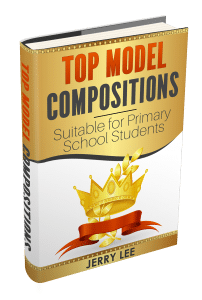
- Common Test / Exam Compo Topics
- Strong Intros
- Descriptive Scenes
- Impactful Endings
- Powerful Vocabulary
1. Study the theme
Most picture compositions are composed of:
- Introduction
- Conflict / Problem
These four connect with one another to create a singular theme. It gives direction and purpose to the story to make it easy and enjoyable. When bringing out the central idea, it’s important to identify the keywords. For this, advise your child to look at the title.
Determine the Type of Composition
When it comes to the title, there can be three types of compositions :
- Positive (e.g. A Memorable Event, An Achievement)
- Negative (e.g. A Disappointment, A Bad Decision)
- Neutral (e.g. A Competition, A Promise)
Get your child to read the theme carefully and identify the keywords. They could help your child figure out the type of composition they have to write.
A) Positive Composition Type
Positive composition types refer to – as the name suggests – a happy or an uplifting theme. Topics that fall under this umbrella include “A Celebration”, “A Success” and “A Pleasant Surprise” to name a few. Writing these type of composition can seem deceptively easy at first. However, the challenge lies in successfully incorporating a problem element in the story while staying true to the theme.
B) Negative Composition Type
Negative composition types include topics such as ‘Making a Mistake’, ‘Something That Was Damaged’, ‘A Disagreement’ and ‘Being Anxious’. Such compositions feature unfavourable circumstances and detail how the protagonist navigates these challenges. The overemphasis on negative composition types in the past means that students may struggle to come up with fresh takes and instead, stick to overused plot ideas.
C) Neutral Composition Type
Finally, the neutral composition type arguably provides the most room for creativity and nuance. This category encompasses prompts like “Something Unexpected”, “A Long Wait”, “Being Curious” and “An Adventure”. Although this allows for students to come up with novel ideas, care must be taken not to write out of topic.
Encourage them to categorise their compo question as well. This can help because sometimes, children may make the mistake of writing an accident as “A Memorable Event”.

Yeah, no injury is worth remembering, since you probably won’t consider an incident that got you hurt as special.
2. Analyse/choose the pictures for your composition
A very common mistake is that children follow the topic… but they forgot to use any of the three pictures! This can prove fatal to their final marks because if none of the pictures are used, it’s an automatic fail in Content, which comprises half the marks in the picture composition.
There are many possible plots just from one theme. However, always ensure that your child chooses at least one of the pictures and incorporates it into the story. Make sure there is some focus of the object in the story. Otherwise, your child probably won’t score very high in Content.
Of course, your child might have trouble deciding what picture to use. To help your child’s decision, let’s take a look at last year’s PSLE’s Picture Composition as an example.

One thing your child should consider is their current vocab. Ask them, “If you were to select this picture, do you have the necessary words and phrases to effectively describe it?”
For example, some may find it easier to use the first picture and use it as the primary focus of their story, because they might know a variety of words for anger (e.g. furious, livid). Your child should keep this in mind when choosing the picture since it gives them a writing advantage.
Whether you are writing a picture composition for primary 3,4,5 or 6…You may ask, “Should my child always avoid a picture because they don’t have the vocabulary/good phrases for it?”
The answer is: No.
What this means is your child should take this chance to expand their vocabulary, so that they could write for a broader range of topics. Moreover, you never know when the pictures might come up again, albeit for a different theme.
3. Plan the Composition

Ever heard of, “If you fail to plan, you plan to fail?” Your child should always plan for their picture compositions. While there is nothing wrong with writing on the fly, it is risky for less experienced writers. They may come face to face with the following problems:
- Sudden transitions: What happened between two sentences remain a mystery. (e.g. I chased the thief. I caught him)
- Change of pronouns: This happens when students decide to write from a third-person perspective and then switch to a first-person halfway, or vice-versa.
- Writing a meaningless introduction: If the composition is about A Bad Decision, your child should not describe trivial things like the weather.
- Lack of closure/weak ending: Your child may find themselves stuck in trying to solve the conflict they came up with or end the story.
Ask your child to pen down any ideas that come into their mind when they brainstorm for the topic.
Get them to lay out the following:
- The characters & the roles they play in the story
- The main problem
- The resolution.
Think of the story as climbing a hill, getting to the top, and coming down it. From there, your child should order the points like this:

Most importantly, make sure the essay is realistic!
Even though you and I wish it was possible, if someone got into a car accident, there is no way a doctor would just put plaster and send them home.
4. Writing the Introduction
The introduction is similar to a first impression: It helps readers decide if it is worth reading. That is why your child is encouraged to write compelling introductions.
True, memorizing introductions from model compositions does help, but it defeats the purpose of creative writing. Writing is like art; it tells the readers something about the writer, and no two pieces are the same.
With that said, here are some common ways your child can start off with:
Your child can begin the story with a direct speech. Get the protagonist to say something captivating and meaningful to the title. This can help move the plot along or open up a door to show what happened.
For example, in the PSLE question A Long Wait, your child may start with a line like this:
“I’ve been waiting for hours!” I grumbled.
Get your child to begin with actions, use vivid phrases to describe them. Doing this is a powerful way to capture the reader’s attention, and they’ll ask: Why is the character doing that?
An example would be:
Amanda tapped her fingers on the table, furrowing her brows as the seconds ticked by. She stared at the time in her phone and heaved a sigh for the umpteenth time.
C) Description
This could apply to:
- The character
- The setting
When doing this, ask your child to consider these questions:
- What is the character doing when the story began?
- How did he/she feel?
- What he/she would say at that point?
- Where did the story take place? (Note: For this one, get them to describe the setting via two out of the five senses. Alternatively, they can describe the setting as the story is written)
5. Writing the Body
Hoo, boy. This would be a long section, so fasten your seatbelts.
The most essential part of the compo is the body, because that is where most of the action is. When it comes to the body, there are three parts to consider:
A) Rising Action (Events before the conflict)
Most of the stories you and your child might have read would always include some problem that the protagonist has to face. Without it, there would be no story, and the plot can be dry. The same goes for any picture composition.
One of the mistakes students make is to state the problem right after the introduction. This runs the risk of an underdeveloped story, which can affect their Content marks. Your child needs to learn how to write the events preceding the main problem, then describe the conflict. This is better known as the rising action.
For example, your child can describe what the character(s) did or did not do that may have caused the problem they would face as the rising action.
It does not have to be long, but it must build up the story’s tension, which would lead to the climax.
B) Climax (The main problem)
This is where the peak of the story occurs, and the turning point happens. Your child should aim to show as much action and the characters’ emotions as possible. Depending on the topic, your child may need to write one of these types of conflict:
- Internal conflict: A moral dilemma (e.g. Your best friend stole a wallet. Should you tell the teacher, or keep it to yourself?)
- External conflict (Man-made) : (e.g. a bully)
- External conflict (Natural): (e.g. a fire)
C) Resolution (Falling action)
The third part of the composition’s body is the resolution, or how the main character solves the problem. This is better known as the falling action. Unfortunately, many students would rush through by writing one or two sentences due to lacking time or ideas. This comes at the cost of a sudden transition.
A thing to note is that most resolutions, primary school kids write would involve a figure of authority to solve the conflict for them. After all, in real life, most kids would turn to the adults, such as you or their teachers, to solve the problems.
If the story involves thieves, it would always have policemen included. In the case of a fire, no doubt there would be firemen. Rarely, the main character would solve the problem themselves.
It is true that some types of compositions(e.g. A Crime You Were Involved In) would leave them little choice but to involve the adults. If that happens, your child should describe the character’s attempts to do something about the problem before help arrives.
For a better resolution, your child should ask themselves two questions:
- What could the protagonist do to solve the conflict?
- How did he/she feel when they attempted to handle the problem?
6. Writing the conclusion
Once the resolution is done, remind your child to wrap up with an ending. That is where your child is supposed to tie up the loose ends and close the story. It is essential to give the readers an ending they are satisfied with, and not keep them in suspense.
What your child can write in the conclusion:
- Character’s reflections and thoughts about the story’s events
- Their feelings over what happened
- Their concluding actions or decisions of future actions.
Regardless, it’s advised for your child to always link the ending back to the theme or topic they are writing about.
It may sound like a lot to take in, but it’s possible for your child to learn how to write a good primary school composition. Writing is like any other skill; there are no shortcuts.
Once your child masters the six tips, all your child needs is time and practice. After all, it doesn’t matter how slowly your child progresses, as long as they don’t stop.
See more related articles on Writing Samurai:
- Common PSLE Composition Topics – How to Handle Them?
- PSLE English Composition – Marking Scheme with Pictures!
- Example Model Compositions Primary School Students
- Picture Compositions for Primary School Students
“Help! My child can’t write! How can I improve my child’s writing skills?”
For a LIMITED TIME ONLY…
Download this FREE Ebook for your child. It contains 80 Awesome Phrases to describe emotions!
More than 11,437 students have benefited from this book!
Click or Tap on button below to download!
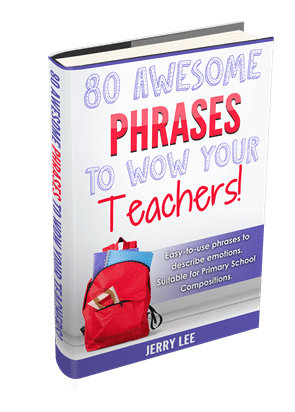
You can check out more Free Compo Writing Resources (Model Compos, Test Papers, etc) on this page >>> Free Compo Writing Resources

Follow Writing Samurai on Telegram for the latest tips and strategies for English, Chinese, and Creative Writing! Pssst... We will also share the latest compo topics during test or exam season!
Click this link to follow our channel >>> https://t.me/writingsamurai
Using Creative Words and Phrases for Composition Writing & Essays
50 idioms your child can use for composition writing.

Writing Samurai is an online platform dedicated to nurturing children’s creative writing skills. Our courses are designed to be engaging and effective, without resorting to traditional teaching methods.
Subscribe for latest news & English tips:
Primary english.
- Model Composition Examples
- Situational Writing Tips
- PSLE English Oral Exam Tips
- PSLE Chinese Oral Exam Tips
- 50 Meaningful Proverbs
- Composition Writing
- PSLE Marking Scheme

SECONDARY ENGLISH
- Past Year's O-Level Essays
- Discursive Essay Writing
- Argumentative Essay Writing
- Secondary English Writing Tips (O-Levels)
- Exam Tips for Secondary English
- 7 Exam Tips for Language Editing (O-Levels)

POPULAR TOPICS
- English Oral
- Chinese Oral
- Situational Writing
- Secondary School Writing
- Essay Writing Lower Secondary
- Synthesis & Transformation
TOP FREE RESOURCES
- Free English Writing Resources List
- Free Model Compositions
- Video - Proverbs Composition Writing
- Video - How to Write A Powerful Introduction
- Video - How to Use Good Expressions in your Compositions
- Free Online Writing Course - Kick Start Your Writing
TOP COURSES
- Junior Writers Masterclass - P1 / P2
- Little Writers Masterclass - P3 / P4
- Creative Writing Masterclass - P5 / P6
- Chinese Composition Writing - P5 / P6
- Essay Writing Masterclass - S1 / S2
- Essay Writing - Expository & Argumentative Crash Course
- Grammar Editing Crash Course for Secondary School
- (65) 9646 0930

5 Ways to Start a Primary School Composition
- Posted By blog-user
“What should I even type?” Ms Xie wondered. The stark whiteness of the blank page seemed to take up her entire field of vision. She was hit by writer’s block. Since her blog post was due on Monday night, she had to find a way to write something to wow her readers—and fast.
Was that introduction attention-grabbing? Wouldn’t you like to read more? Hi, I’m Ms Xie, and I’m thrilled to share with you five techniques on how to write a good introduction to your school compositions.
Have you ever caught yourself going onto the internet, and searching for terms like, “ How to write a composition for Primary School? ”
Students must be strategic when tackling composition questions and from the beginning of the story, there is already ample opportunity to capture the reader’s attention and to score. Adding on to our previous post on brilliant beginnings , I would like to share with you a few more ways to get your readers glued to your story right from the start.
Instead of “Last Sunday,”, or “One sunny day,”, students should make their compositions stand out by using the most appropriate method given for the topic. Here are five ways to help students.
1. Start With a Line of Dialogue
This is a great method to try out because it is suitable for almost any topic given . Let’s say that the topic is “Dishonesty” and the character found a wallet on the ground. Many students would write, “One sunny day, I was walking home from school.” However, the story would be improved with a line of dialogue. Using a line of dialogue to start should instantly add relevance and life to the story.
Before writing the line of dialogue, the student has to ask himself either one of the following questions:
How is the character related to this story? (Main character or a character that shows the setting e.g. a staff working at a cinema?)
What is the character thinking?
What is the character feeling?
What does the character want when he sees this?
An example of an eye-catching line of dialogue will be the following:
“Great! Now I can buy some ice cream!” I exclaimed as I picked up the wallet.
Not only is this a line of dialogue relevant to the story crafted, it also leaves the reader curious as to what is happening in the story by starting at an exciting point in the story.
What will an ineffective line of dialogue then? Some students tend to give very general lines of dialogue and write statements such as:
“We have arrived!” Or some other variant of “I am here!”
To make this more impactful, try being specific and stating where the location was in the story itself.
E.g. “Wow! I wonder what flavour I should choose,” I squealed while my eyes darted from one tub of ice cream to another. Last Sunday, I was at the ice cream parlour with my family.
Another example of a line of dialogue that is too general is the following:
“Bye, John!” my mother said.
This does not pique the reader’s curiosity and make him or her want to find out more. It also does not show how the character feels and what she is thinking.
Instead, try:
“Remember to take out the trash, John!” my mother reminded me before she left the house.
Here is another pitfall. Can you tell why it is not ideal?
“I have found a wallet!” I exclaimed to myself.
This is an action. It’s far better to start a story by showing the action than to narrate it to the audience. Imagine that you are picking up a wallet. Do you say the action as you do it? No. Therefore, in such situations, if the student starts with a line of dialogue, he or she has to imagine what the person is thinking when he says it, which brings us to…
2. Start With a Thought
This is very similar to a line of dialogue, but what’s the difference? This technique would be used effectively especially if the character cannot say this thought aloud. Saying this thought aloud would get the character into trouble. Imagine that the character is about to take a test. Does the character say:
“Oh no! I didn’t study for it!” Jim shouted.
Jim probably would not be able to say this because he feels so nervous. Moreover, examination halls require silence. Instead, show his thought:
“Oh no, I didn’t study!” Jim thought as panic engulfed him. He started to sweat as he rifled through the pages.
Other scenarios in which this technique can be used are as follow:
A teacher is about to call on the student:
“Please don’t call on me, please don’t call on me,” Jim prayed.
The teacher is about to end class:
“Oh, I hope Miss Lee forgets about assigning homework,” I crossed my fingers and prayed.
*Do bear in mind that the use of quotation marks to punctuate a thought (or internal dialogue) is not necessary. You will notice that many writers tend to express thoughts without the quotation marks like this during writing:
Oh no, I didn’t study! Jim thought as panic engulfed him.
Therefore, do not be alarmed if you come across thoughts that have been expressed as shown above.
3. Start With an Action
Not with any action, of course, but with an action that is usually happening at the climax or leading to the climax of the story. This opening action is particularly great for scenarios with violence in them, such as bullying. While we do not condone violence, we do acknowledge that problems such as bullying happen often in school. This is also a commonly tested topic in the examinations.
In this story, the bully is about to punch me, the victim.
We can start a story like this.
The bully raised his fist and glared at me.
This is a great way to begin a story because it creates a suspenseful atmosphere with the action by starting at an exciting point in the story.
This also works well for running a race:
I dashed down the racetrack, slightly behind my rival.
This technique lends well to the story about races because we get into the action quickly. Some students may use this technique for stories that deal more with emotions, such as sitting for an examination that one was not prepared for. Here’s what they may write:
I sat down in my seat and stared at the paper.
Do bear in mind that while there are no right and wrong answers for compositions, the action can more active to capture the reader’s attention. Try this instead:
I scribbled the answers to the questions.
4. Start With a Sound
This can be used for many stories, but are much better for emergency situations or stories about fires . This technique also lends well to action-packed stories with a lot of sound effects .
“Sizzle!” The frying pan crackled as I poured hot oil on it.
However, don’t use these sounds too often! If not, the teacher will get tired of reading them. Some common beginnings to avoid include:
“Chirp, chirp!” The birds sang.
“Riiing!” My alarm clock/ The school bell rang.
“Ding dong!” I rang the doorbell.
While it’s not wrong, many teachers have read this sort of beginning and it is not memorable. instead, focus on the loudest or the most important sound in the scene .
Alternatively, you can also write sound like this:
The car screeched when the driver pressed on the brakes.
5. Describe the Picture Used
Lastly, you can start by focusing on describing the picture given . For example, if the picture is important in the story, such as a fire, it would be wise to describe the fire at the start of the story.
Bright orange flames licked the base of the pan. Last Sunday, my mother was making pancakes.
If the weather is crucial to the plot, is the given topic or picture, then it is safe to start the story by describing the weather . Some topics may include “A Sweltering Day” or “A Storm” .
Remember, descriptions about the weather may not be helpful all the time. Many students still tend to describe the weather, even when the main character is indoors:
White magnolia clouds drifted across the sky and the sun beat down on everyone.
Thunder roared and lightning flashed.
While this may be acceptable, it does not jump straight into the setting straightaway. Neither does it start at the location of the story. Due to this, the student spends time creating one extra paragraph about making his or her way to the location of the story. It’s always wise to set the story at the location itself . The main character should only leave the setting towards the end of the story if need be.
Final Notes:
Now that you know all of these five strategies, here’s your chance to make your school compositions more interesting! Although a lot of common topics may seem boring — A Fire, An Honest Act, An Accident — it’s up to you to find the joy in writing and make your story come to life! Hopefully, with these five beginnings, you’ll be able to come up with an engaging opening to pull your reader into the story.
Which of these beginnings would you use? Let us know in the comments!
Happy writing!

- Find out more!

Ms. Xie is an English Teacher at Lil’ but Mighty. Her best subject has always been English and she’s been writing ever since she could hold a pen. Her first book, Dragonhearted, was shortlisted for the Scholastic Asian Book Award in 2014 and published in 2016. It was also shortlisted for the Singapore Book Awards in 2017. She also likes hugging fat cats. The fatter they are, the better.
Have something to share? Drop us a comment below!
Leave a reply.
You must be logged in to post a comment.
Other related posts

Creative Writing | 3 Easy Steps to Write Your Own Haiku!
- Creative Writing & Compo
Verbs: More than Just Action Words! | Part 3: Changes in Verb Forms
Ketchup on english – is, are, was and were.
- Grammar , Lower Primary
Audience In Visual Text | Visual Text Comprehension
- Visual Text Comprehension
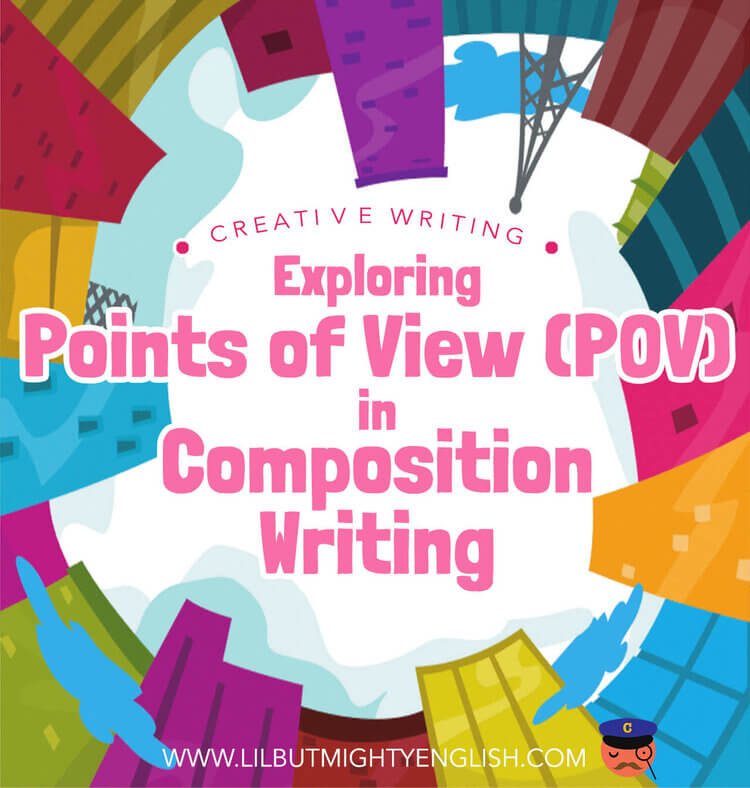
Exploring Points of View (POV) in Composition Writing
Metaphors for | part ii – implied metaphors.

10 Beautiful Vivid Verbs to Boost Your Writing and Oral! | Primary School English
- Creative Writing & Compo , Oral
Metaphors For? | Part I – An Introduction to Metaphors

3 Family-Friendly Shows on Netflix (Educational & Entertaining)!
- English in the real world
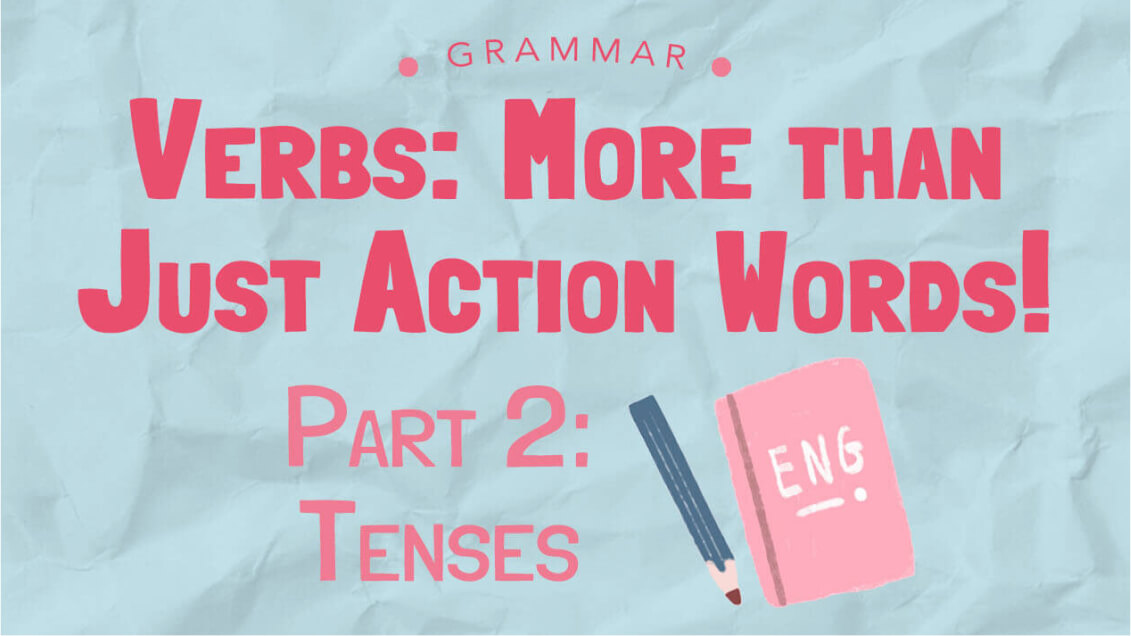

Verbs: More than Just Action Words! | Part 2: Tenses
2021 father’s day contest winners.
- Company News
Verbs: More than Just Action Words! | Part 1: Subject-Verb Agreement

10 Beautiful Words You Can Use in Narrative / Descriptive Writing | Secondary School
- Secondary School English

Ways To Create A Well-Rounded Character | Creative Writing
Understanding purpose-related questions in visual text comprehension.

How Playing Video Games Can Improve Our English (With Practical Tips for Parents!)

Primary School Composition | Onomatopoeia – What’s That?
2021 mother’s day contest winners + our founder’s journey (mother’s day special).
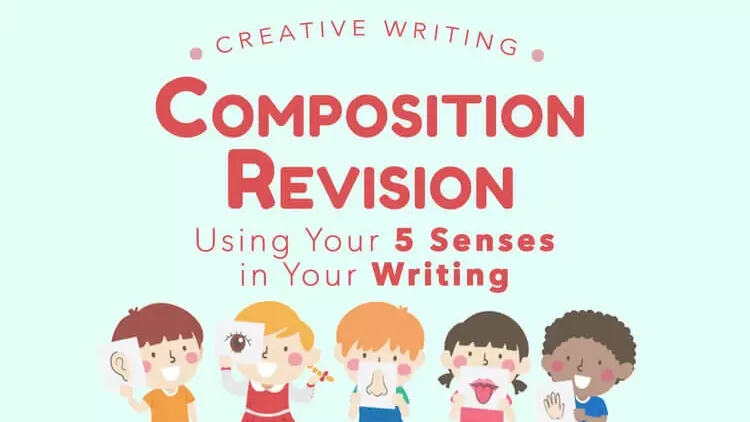
Composition Revision: Using Your 5 Senses in Your Writing
How to create a dynamic piece of writing using idioms, ketchup on english – subject-verb agreement, punctuation marks: colon vs. semicolon.

4 steps to Create Suspense

Earth Hour – Oral Topic
That simile though 2 | using stronger similes.

3 Tips for English Comprehension (Open-Ended)
- Comprehension

PSLE ORAL | Compiled Prelim 2021 Oral Topics + Questions!
- Free Downloads , Oral
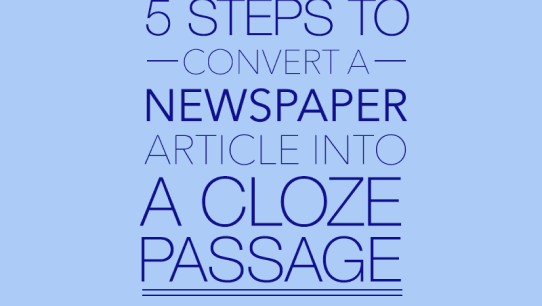
5 Steps to Convert a Newspaper Article into a Cloze Passage
- Cloze Passage and Editing , Free Downloads , Primary School English

PSLE English | Oral Conversation: Free SG50 Sample Practice + Model Answers
- Free Downloads , Oral , Primary School English

PSLE English | Oral Conversation: Filling your Story with Details Easily + Free Revision Cards
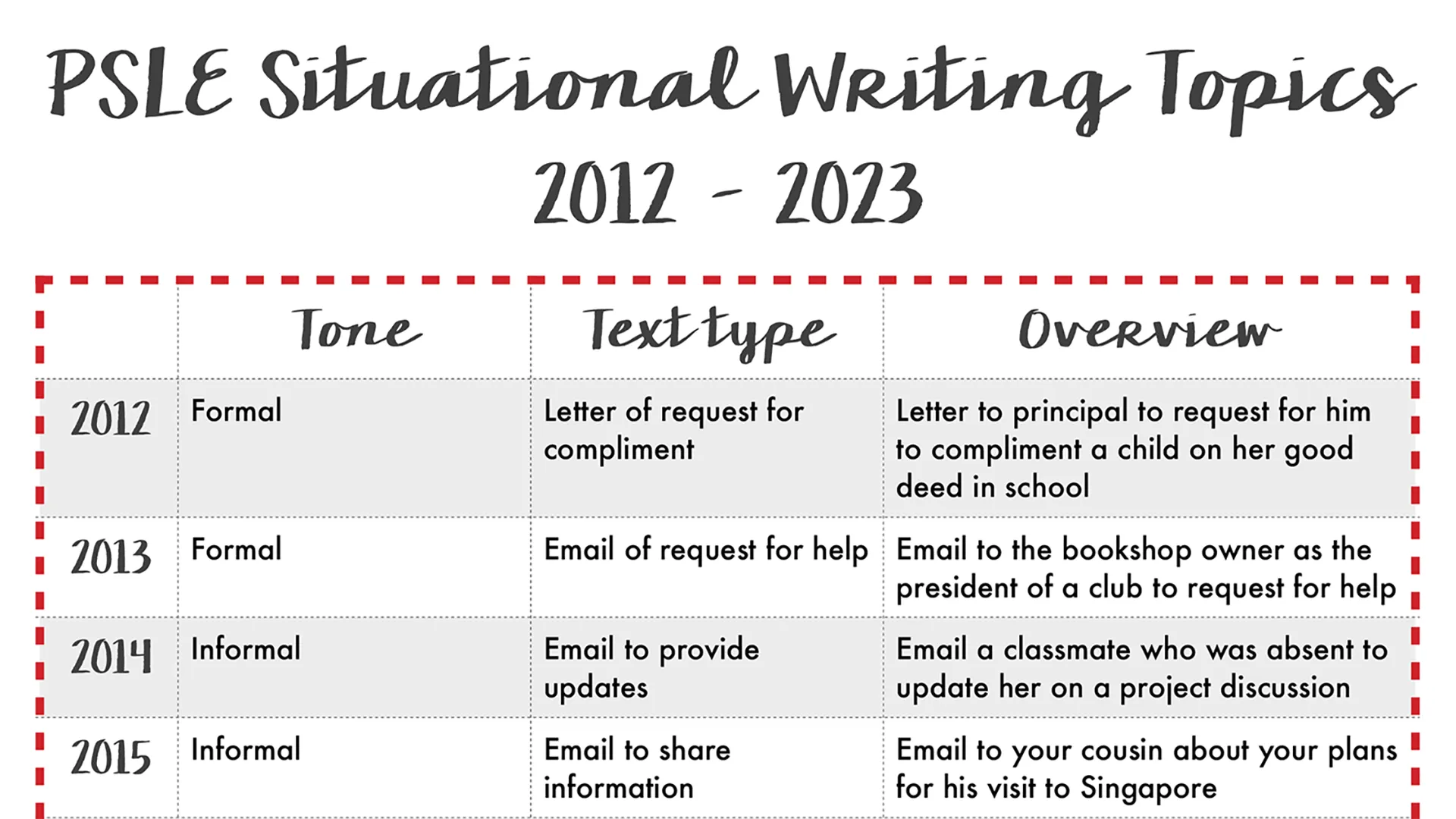
PSLE English | Situational Writing: Q&A + Formal vs Informal Writing Comparison Chart
- Free Downloads , Primary School English , Situational Writing

PSLE English Tips | Oral: Stimulus-Based Conversation Checklist

A Little Encouragement | DIY Motivational Bookmark (Easy to personalise too!)
- English in the real world , Free Downloads , Reading

Situational Writing: Step-by-Step Guide + Free Revision Card

I Love Reading | 5 Ways to Motivate Reluctant Readers
- English in the real world , Free Downloads

PSLE English | Printable Ultimate Grammar & Synthesis Summary
- Free Downloads , Grammar , Sentence Synthesis
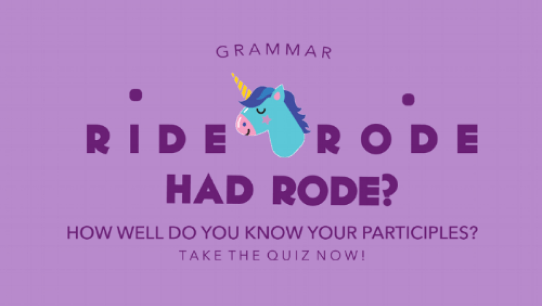
How Well Do You Know Your Past Participles?
- Free Downloads , Grammar

Primary Composition Writing | Starting Sentences with Introductory Clauses
- Creative Writing & Compo , Free Downloads

The Sentence Train | Lower Primary English

PSLE English Tips | Oral: Reading Checklist
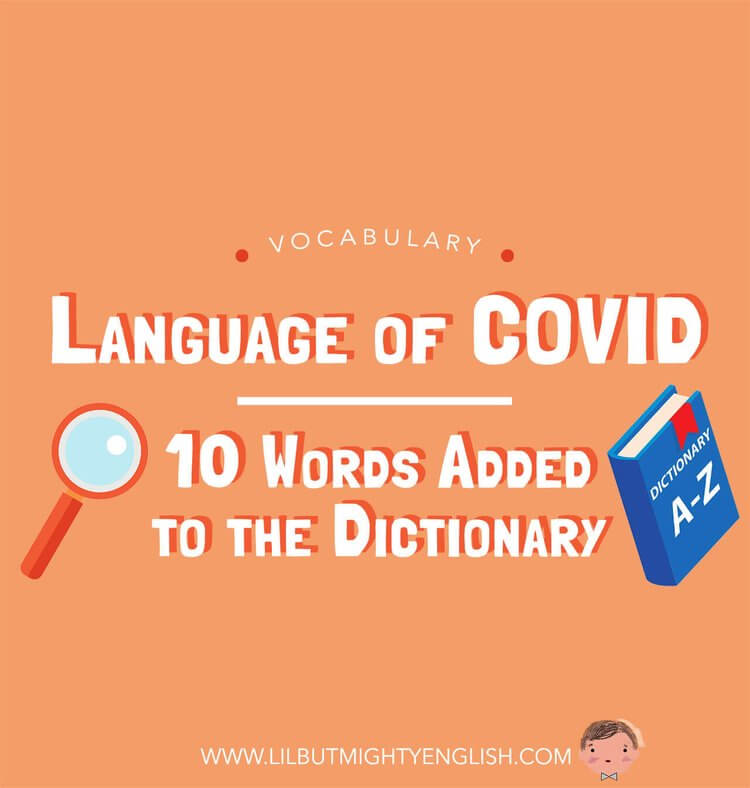
Language of COVID | 10 Words Added to the Dictionary
- English in the real world , Vocabulary

Using Personification to Show, Not Tell!
- Creative Writing & Compo , Primary School English
Expressing Character Feelings Too! | Using Show-Not-Tell (Part 2)
How to choose a book to read: 8 ways.

How to Dress Up A Boring Paragraph | Creative Writing
Ketchup on english – halloween special: prepositions of time.
- Lower Primary
Ketchup on English! – Verbs Are Not Just Action Words!

Expressing Character Feelings | Using Show-Not-Tell
Which picture should i use | choosing the best picture to use for composition.

Oral: Reading Passage | Long Vowels – Have You Been Reading Your Vowels Correctly?
Like what you are reading.
Subscribe now to receive news and tips hot off the press!
The greatest joy in giving small group tuition is a teacher’s ability to create greater impact in the children that have been entrusted to her care.
Our Programmes
- Primary English
- Secondary English
- Self-Paced Online Courses
- School Clients
- Copyright Terms & Conditions
- Personal Data Protection Policy
- Registration Terms & Conditions
- Contest Terms & Conditions
Lil’ but Mighty Clementi Block 432 Clementi Avenue 3, #01-282, Singapore 120432
Lil’ but Mighty Bukit Timah 170 Upper Bukit Timah Road, #B2-02 Bukit Timah Shopping Centre, Singapore 588179
Lil’ but Mighty Hougang Block 211 Hougang Street 21, #01-305 (Back entrance), Singapore 530211
Lil’ but Mighty Novena 1 Goldhill Plaza, #02-25, Singapore 308899
Lil’ but Mighty Marine Parade 1 Marine Parade, #04-05 Parkway Centre, Singapore 449408
Lil’ but Mighty Tampines 3 Tampines Central 1, #06-03 Tampines Plaza 1, Singapore 529540
- Primary Hub
- Art & Design
- Design & Technology
- Health & Wellbeing
- Secondary Hub
- Citizenship
- Primary CPD
- Secondary CPD
- Book Awards
- All Products
- Primary Products
- Secondary Products
- School Trips
- Trip Directory
- Trips by Subject
- Trips by Type
- Trips by Region
- Submit a Trip Venue
Trending stories

Top results

- How To Use Childrens Essays As Indicators Of Progress
How to use essay writing in primary school to measure curriculum impact

By using structure strips and comparative judgement, essay writing becomes a simple and effective end-of-topic assessment activity

- The link between essay writing and Ofsted’s ‘intention, implementation, impact’ agenda
- How pupils can use structure strips for essay writing
- How to use comparative judgement to mark essays
- What makes a good essay
Read in 3-5 minutes…
In 2019, Her Majesty’s Chief Inspector, Amanda Spielman, announced in a series of speeches that Ofsted would be shifting the focus of their inspections to the quality of education being offered in each school.
And with that flap of a butterfly’s wing, tornados raged across England’s schools, as senior leaders tore up curriculum plans and started again from scratch.
Ofsted suggested that curriculum can be understood through three lenses, which fortuitously, as is often the case in education, all begin with the same letter.
Intention, implementation and impact thus became top agenda items for every SLT meeting in the country.
In the first article of this series I suggested that this renewed focus isn’t really anything to worry about.
In fact, if handled with a level head, it should be an exciting and energising opportunity for teachers and leaders to carefully consider the torches that they will pass on to the next generation.
Exactly what knowledge being handed down is best described as the ‘intended’ curriculum, and we have explored knowledge organisers as a useful tool to set out these intentions.
The manner in which that knowledge is then sequenced – and how pupils interact with it – is perhaps less straightforward, but we have also explored using work booklets and quizzing as safe bets to support the ‘implemented’ curriculum.
What about the last ‘I’ in Ofsted’s triumvirate: ‘impact’?
There are a few different ways that we assess impact at Reach. We frequently have conversations with pupils about their learning. They should be able to speak confidently, authoritatively and with precision and enthusiasm about their topic.
Every half term we have a parent celebration event where they will present on what they’ve learned. We also use end-of-unit quizzes, giving us an overview of how much of the key knowledge has been retained over the term.
But perhaps the most transformational aspect of our foundation curriculum has been the introduction of essay writing.
At Reach, every child from Y2 upwards writes an essay at the end of each half term based on the topic that they are learning about.
In the younger years, the essay question will be relatively straightforward – for example, “How did the way people live change throughout the Stone Age?”
We give children a ‘ structure strip ’, with prompt questions for each section of the essay. The questions for each paragraph on the structure strip are linked to one of the six lessons in the work booklet.
So when writing the first paragraph, pupils will be prompted with, “How long ago was the Stone Age?” and, “What were the names of the different eras in the Stone Age.”
By answering these questions, pupils begin to construct a very impressive essay. It is also a chance to revisit, recall and play about with the knowledge, further embedding it in memory.
It’s true that to begin with, the essays are quite similar, but we are very comfortable with this.
After all, we’re not trying to trip them up, and writing essays is a new procedure for them. We want to give them lots of practice with a clear scaffold, so that by the time they get to year four or five, when we say “We’re writing an essay,” the class think, “Piece of cake, I’ll start with an overview of the topic’.
As pupils get older, the essays become more sophisticated. For example, after studying the civil rights movement in the US, our year sixes answer the question ‘“Civil disobedience was more important than legal decisions during the civil rights movement.” To what extent do you agree with this statement?’
This essay title forces pupils to apply their disciplinary skills as well as their substantive knowledge.
Due to the detailed work booklets we use for each unit, we know that all pupils are familiar with many incidences of civil disobedience: Rosa Parks refusing to stand on the bus; the Montgomery bus boycott; the Greensboro sit-in; the march from Selma to Montgomery.
However, they have also been taught about the legal aspects of civil rights: Jim Crow Laws; Brown vs the Board of Education; the doctrine of ‘separate but equal’; the Fourteenth Amendment; and the various Civil Rights Acts.
It is not enough, now, for our Y6s to simply restate what they have learned. Instead, we are asking them to make a judgement. Which was more important? What is the relationship between them?
In doing so, they are beginning to think like a historian thinks – exploring history as a discipline as well as a subject.
This, of course, is only possible with lots and lots of domain specific knowledge, which is why the detailed curriculum is so important.
To begin with, we found it difficult to assess the essays. After all, we hadn’t really considered what made a ‘good’ piece of history writing before.
Instead we were giving creative literacy tasks based loosely on some period (‘pretend to be a Victorian child and write a diary entry’).
Now, though, we have a bank of essays for each unit of work that teachers can use before teaching a new topic to gain an idea of what can be expected.
We comparatively judge the essays of each unit, ranking them from best to worst. This gives a clear indication of an ‘expected standard’ essay, as well as ‘greater depth’ and working towards.
These essays are also useful indicators of progress, as year-on-year you can watch a child’s essays improve and become increasingly sophisticated.
In terms of professional development, looking at the differences both between high and low attaining essays, and also essays across years, can be extremely valuable.
It is fair to say (and was surprising to us) that all children love the essay writing. We often have difficulty ushering them to playtime during these lessons.
There seems to be something very satisfying about having a lot to write about and demonstrating that you have mastered a particular topic.
For many children, we also often get the best writing of the half term in these lessons.
So although some may baulk at the idea of essay writing in primary schools, I’d encourage you to give it a whirl at the end of your next topic.
It gives pupils a chance to apply their knowledge in a fulfilling way. It gives leaders a clear indication of how much pupils have learned in their topic. It gives you another great piece of writing for each child.
And it begins to show all pupils that each subject is a discipline, and that they can master, challenge and perhaps even add to the powerful knowledge within it.
What makes a good essay?
While analysing some recent essays together, teachers at our school noticed some common features of the best essays.
These top pupils organised their ideas in a very logical way. For example, they may have written, “There are several reasons that John is regarded as one of the worst kings in history”. Second, the best essays were balanced. So that same essay would list John’s shortcomings, before launching into an “However…” paragraph.
The best essays were also precise and detailed. They gave lots of examples to back up any points being made.
The importance of learning the facts included in the booklet can’t be stressed enough, then, as the pupils who have this automated found writing a doddle.
Jon Hutchinson is assistant headteacher at Reach Academy Feltham. Follow him on Twitter at @jon_hutchinson_ . Find all six articles in this series on taking a curriculum deep dive, here .
Sign up to our newsletter
You'll also receive regular updates from Teachwire with free lesson plans, great new teaching ideas, offers and more. (You can unsubscribe at any time.)
Which sectors are you interested in?
Early Years
Thank you for signing up to our emails!
You might also be interested in...
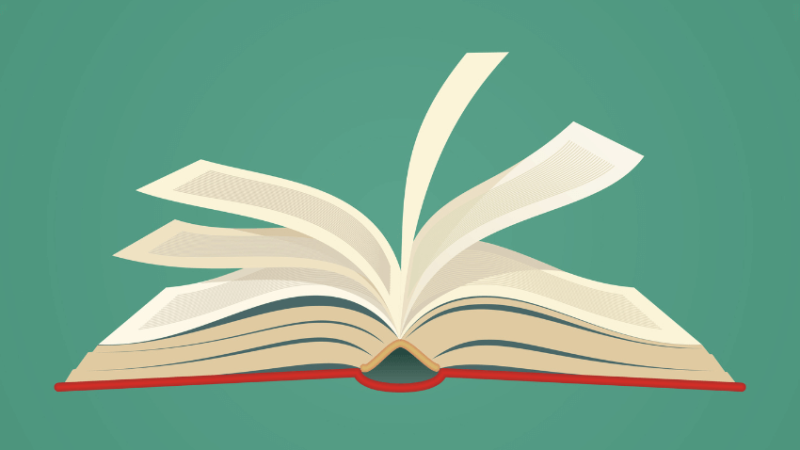
Why join Teachwire?
Get what you need to become a better teacher with unlimited access to exclusive free classroom resources and expert CPD downloads.
Exclusive classroom resource downloads
Free worksheets and lesson plans
CPD downloads, written by experts
Resource packs to supercharge your planning
Special web-only magazine editions
Educational podcasts & resources
Access to free literacy webinars
Newsletters and offers
Create free account
I would like to receive regular updates from Teachwire with free lesson plans, great new teaching ideas, offers and more. (You can unsubscribe at any time.)
By signing up you agree to our terms and conditions and privacy policy .
Already have an account? Log in here
Thanks, you're almost there
To help us show you teaching resources, downloads and more you’ll love, complete your profile below.
Welcome to Teachwire!
Set up your account.
Lorem ipsum dolor sit amet consectetur adipisicing elit. Commodi nulla quos inventore beatae tenetur.
Log in to Teachwire
Not registered with Teachwire? Sign up for free
Reset Password
Remembered your password? Login here

Have a language expert improve your writing
Run a free plagiarism check in 10 minutes, generate accurate citations for free.
- Knowledge Base
- How to structure an essay: Templates and tips
How to Structure an Essay | Tips & Templates
Published on September 18, 2020 by Jack Caulfield . Revised on July 23, 2023.
The basic structure of an essay always consists of an introduction , a body , and a conclusion . But for many students, the most difficult part of structuring an essay is deciding how to organize information within the body.
Instantly correct all language mistakes in your text
Upload your document to correct all your mistakes in minutes

Table of contents
The basics of essay structure, chronological structure, compare-and-contrast structure, problems-methods-solutions structure, signposting to clarify your structure, other interesting articles, frequently asked questions about essay structure.
There are two main things to keep in mind when working on your essay structure: making sure to include the right information in each part, and deciding how you’ll organize the information within the body.
Parts of an essay
The three parts that make up all essays are described in the table below.
Order of information
You’ll also have to consider how to present information within the body. There are a few general principles that can guide you here.
The first is that your argument should move from the simplest claim to the most complex . The body of a good argumentative essay often begins with simple and widely accepted claims, and then moves towards more complex and contentious ones.
For example, you might begin by describing a generally accepted philosophical concept, and then apply it to a new topic. The grounding in the general concept will allow the reader to understand your unique application of it.
The second principle is that background information should appear towards the beginning of your essay . General background is presented in the introduction. If you have additional background to present, this information will usually come at the start of the body.
The third principle is that everything in your essay should be relevant to the thesis . Ask yourself whether each piece of information advances your argument or provides necessary background. And make sure that the text clearly expresses each piece of information’s relevance.
The sections below present several organizational templates for essays: the chronological approach, the compare-and-contrast approach, and the problems-methods-solutions approach.
Receive feedback on language, structure, and formatting
Professional editors proofread and edit your paper by focusing on:
- Academic style
- Vague sentences
- Style consistency
See an example

The chronological approach (sometimes called the cause-and-effect approach) is probably the simplest way to structure an essay. It just means discussing events in the order in which they occurred, discussing how they are related (i.e. the cause and effect involved) as you go.
A chronological approach can be useful when your essay is about a series of events. Don’t rule out other approaches, though—even when the chronological approach is the obvious one, you might be able to bring out more with a different structure.
Explore the tabs below to see a general template and a specific example outline from an essay on the invention of the printing press.
- Thesis statement
- Discussion of event/period
- Consequences
- Importance of topic
- Strong closing statement
- Claim that the printing press marks the end of the Middle Ages
- Background on the low levels of literacy before the printing press
- Thesis statement: The invention of the printing press increased circulation of information in Europe, paving the way for the Reformation
- High levels of illiteracy in medieval Europe
- Literacy and thus knowledge and education were mainly the domain of religious and political elites
- Consequence: this discouraged political and religious change
- Invention of the printing press in 1440 by Johannes Gutenberg
- Implications of the new technology for book production
- Consequence: Rapid spread of the technology and the printing of the Gutenberg Bible
- Trend for translating the Bible into vernacular languages during the years following the printing press’s invention
- Luther’s own translation of the Bible during the Reformation
- Consequence: The large-scale effects the Reformation would have on religion and politics
- Summarize the history described
- Stress the significance of the printing press to the events of this period
Essays with two or more main subjects are often structured around comparing and contrasting . For example, a literary analysis essay might compare two different texts, and an argumentative essay might compare the strengths of different arguments.
There are two main ways of structuring a compare-and-contrast essay: the alternating method, and the block method.
Alternating
In the alternating method, each paragraph compares your subjects in terms of a specific point of comparison. These points of comparison are therefore what defines each paragraph.
The tabs below show a general template for this structure, and a specific example for an essay comparing and contrasting distance learning with traditional classroom learning.
- Synthesis of arguments
- Topical relevance of distance learning in lockdown
- Increasing prevalence of distance learning over the last decade
- Thesis statement: While distance learning has certain advantages, it introduces multiple new accessibility issues that must be addressed for it to be as effective as classroom learning
- Classroom learning: Ease of identifying difficulties and privately discussing them
- Distance learning: Difficulty of noticing and unobtrusively helping
- Classroom learning: Difficulties accessing the classroom (disability, distance travelled from home)
- Distance learning: Difficulties with online work (lack of tech literacy, unreliable connection, distractions)
- Classroom learning: Tends to encourage personal engagement among students and with teacher, more relaxed social environment
- Distance learning: Greater ability to reach out to teacher privately
- Sum up, emphasize that distance learning introduces more difficulties than it solves
- Stress the importance of addressing issues with distance learning as it becomes increasingly common
- Distance learning may prove to be the future, but it still has a long way to go
In the block method, each subject is covered all in one go, potentially across multiple paragraphs. For example, you might write two paragraphs about your first subject and then two about your second subject, making comparisons back to the first.
The tabs again show a general template, followed by another essay on distance learning, this time with the body structured in blocks.
- Point 1 (compare)
- Point 2 (compare)
- Point 3 (compare)
- Point 4 (compare)
- Advantages: Flexibility, accessibility
- Disadvantages: Discomfort, challenges for those with poor internet or tech literacy
- Advantages: Potential for teacher to discuss issues with a student in a separate private call
- Disadvantages: Difficulty of identifying struggling students and aiding them unobtrusively, lack of personal interaction among students
- Advantages: More accessible to those with low tech literacy, equality of all sharing one learning environment
- Disadvantages: Students must live close enough to attend, commutes may vary, classrooms not always accessible for disabled students
- Advantages: Ease of picking up on signs a student is struggling, more personal interaction among students
- Disadvantages: May be harder for students to approach teacher privately in person to raise issues
An essay that concerns a specific problem (practical or theoretical) may be structured according to the problems-methods-solutions approach.
This is just what it sounds like: You define the problem, characterize a method or theory that may solve it, and finally analyze the problem, using this method or theory to arrive at a solution. If the problem is theoretical, the solution might be the analysis you present in the essay itself; otherwise, you might just present a proposed solution.
The tabs below show a template for this structure and an example outline for an essay about the problem of fake news.
- Introduce the problem
- Provide background
- Describe your approach to solving it
- Define the problem precisely
- Describe why it’s important
- Indicate previous approaches to the problem
- Present your new approach, and why it’s better
- Apply the new method or theory to the problem
- Indicate the solution you arrive at by doing so
- Assess (potential or actual) effectiveness of solution
- Describe the implications
- Problem: The growth of “fake news” online
- Prevalence of polarized/conspiracy-focused news sources online
- Thesis statement: Rather than attempting to stamp out online fake news through social media moderation, an effective approach to combating it must work with educational institutions to improve media literacy
- Definition: Deliberate disinformation designed to spread virally online
- Popularization of the term, growth of the phenomenon
- Previous approaches: Labeling and moderation on social media platforms
- Critique: This approach feeds conspiracies; the real solution is to improve media literacy so users can better identify fake news
- Greater emphasis should be placed on media literacy education in schools
- This allows people to assess news sources independently, rather than just being told which ones to trust
- This is a long-term solution but could be highly effective
- It would require significant organization and investment, but would equip people to judge news sources more effectively
- Rather than trying to contain the spread of fake news, we must teach the next generation not to fall for it
Here's why students love Scribbr's proofreading services
Discover proofreading & editing
Signposting means guiding the reader through your essay with language that describes or hints at the structure of what follows. It can help you clarify your structure for yourself as well as helping your reader follow your ideas.
The essay overview
In longer essays whose body is split into multiple named sections, the introduction often ends with an overview of the rest of the essay. This gives a brief description of the main idea or argument of each section.
The overview allows the reader to immediately understand what will be covered in the essay and in what order. Though it describes what comes later in the text, it is generally written in the present tense . The following example is from a literary analysis essay on Mary Shelley’s Frankenstein .
Transitions
Transition words and phrases are used throughout all good essays to link together different ideas. They help guide the reader through your text, and an essay that uses them effectively will be much easier to follow.
Various different relationships can be expressed by transition words, as shown in this example.
Because Hitler failed to respond to the British ultimatum, France and the UK declared war on Germany. Although it was an outcome the Allies had hoped to avoid, they were prepared to back up their ultimatum in order to combat the existential threat posed by the Third Reich.
Transition sentences may be included to transition between different paragraphs or sections of an essay. A good transition sentence moves the reader on to the next topic while indicating how it relates to the previous one.
… Distance learning, then, seems to improve accessibility in some ways while representing a step backwards in others.
However , considering the issue of personal interaction among students presents a different picture.
If you want to know more about AI tools , college essays , or fallacies make sure to check out some of our other articles with explanations and examples or go directly to our tools!
- Ad hominem fallacy
- Post hoc fallacy
- Appeal to authority fallacy
- False cause fallacy
- Sunk cost fallacy
College essays
- Choosing Essay Topic
- Write a College Essay
- Write a Diversity Essay
- College Essay Format & Structure
- Comparing and Contrasting in an Essay
(AI) Tools
- Grammar Checker
- Paraphrasing Tool
- Text Summarizer
- AI Detector
- Plagiarism Checker
- Citation Generator
The structure of an essay is divided into an introduction that presents your topic and thesis statement , a body containing your in-depth analysis and arguments, and a conclusion wrapping up your ideas.
The structure of the body is flexible, but you should always spend some time thinking about how you can organize your essay to best serve your ideas.
An essay isn’t just a loose collection of facts and ideas. Instead, it should be centered on an overarching argument (summarized in your thesis statement ) that every part of the essay relates to.
The way you structure your essay is crucial to presenting your argument coherently. A well-structured essay helps your reader follow the logic of your ideas and understand your overall point.
Comparisons in essays are generally structured in one of two ways:
- The alternating method, where you compare your subjects side by side according to one specific aspect at a time.
- The block method, where you cover each subject separately in its entirety.
It’s also possible to combine both methods, for example by writing a full paragraph on each of your topics and then a final paragraph contrasting the two according to a specific metric.
You should try to follow your outline as you write your essay . However, if your ideas change or it becomes clear that your structure could be better, it’s okay to depart from your essay outline . Just make sure you know why you’re doing so.
Cite this Scribbr article
If you want to cite this source, you can copy and paste the citation or click the “Cite this Scribbr article” button to automatically add the citation to our free Citation Generator.
Caulfield, J. (2023, July 23). How to Structure an Essay | Tips & Templates. Scribbr. Retrieved April 2, 2024, from https://www.scribbr.com/academic-essay/essay-structure/
Is this article helpful?

Jack Caulfield
Other students also liked, comparing and contrasting in an essay | tips & examples, how to write the body of an essay | drafting & redrafting, transition sentences | tips & examples for clear writing, unlimited academic ai-proofreading.
✔ Document error-free in 5minutes ✔ Unlimited document corrections ✔ Specialized in correcting academic texts

IMAGES
VIDEO
COMMENTS
Essay for Primary School: Simple Guide for Kids [with Samples] (44 votes) The age of primary school students ranges from 5 to 11 years. At this stage of education, children start developing their writing skills. They make their first steps to analyzing and proving their points of view.
2. Encourage your students to join in groups and write down their own ideas starting by those of the author. Eg: Reading is important because…; Books are …, etc. 3. Ask students to check grammar and spelling. Help them when necessary. 4. Share their final works.
Journaling is a time-honored pedagogical tradition that helps kids in elementary school engage with their budding vocabularies, penmanship, and reading comprehension. Plus, it gets them to use their imaginations and process their own thoughts and feelings. (In other words, journal writing rocks.) Now…. That doesn’t mean any ol’ journaling ...
ESSAY WRITING PARAGRAPH WRITING TIPS. Each paragraph should focus on a single main idea. Paragraphs should follow a logical sequence; students should group similar ideas together to avoid incoherence. Paragraphs should be denoted consistently; students should choose either to indent or skip a line.
Discover the three steps to writing an essay, which include choosing a topic, brainstorming, and writing. ... Writing Process for Elementary School. ... Primary Sources: Lesson for Kids 3:26 How ...
Describe your most unusual talent. My most embarrassing moment was when... Describe your favorite food and why. Describe your least favorite food and why. The top three qualities of a best friend are... Write about what you would cook for an enemy. Use these words in a story: scared, angry, Sunday, bugs.
Composition writing is tested in Paper 1 of the English language paper. It requires students to write a narrative essay based on a given theme and at least one of three picture prompts. The length of the essay is 150 words for P5 and P6 students (and lower for P1 to P4 students). Students are assessed on their ‘Content’ and ‘Language’.
1. Start With a Line of Dialogue. This is a great method to try out because it is suitable for almost any topic given. Let’s say that the topic is “Dishonesty” and the character found a wallet on the ground. Many students would write, “One sunny day, I was walking home from school.”. However, the story would be improved with a line of ...
These essays are also useful indicators of progress, as year-on-year you can watch a child’s essays improve and become increasingly sophisticated. In terms of professional development, looking at the differences both between high and low attaining essays, and also essays across years, can be extremely valuable.
The basic structure of an essay always consists of an introduction, a body, and a conclusion. But for many students, the most difficult part of structuring an essay is deciding how to organize information within the body. This article provides useful templates and tips to help you outline your essay, make decisions about your structure, and ...